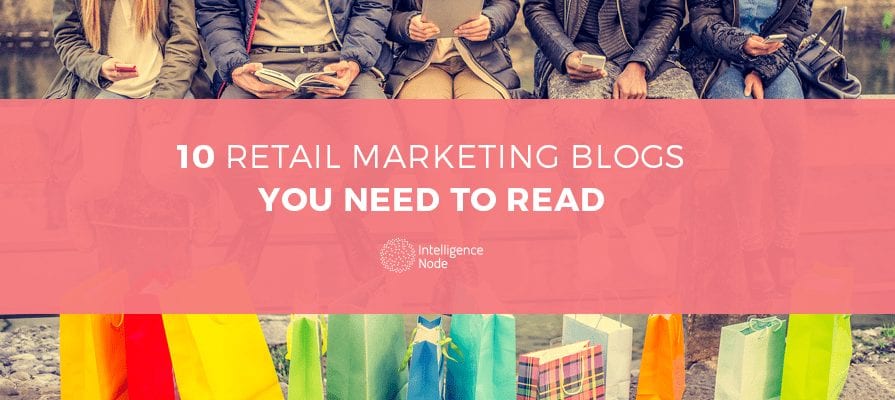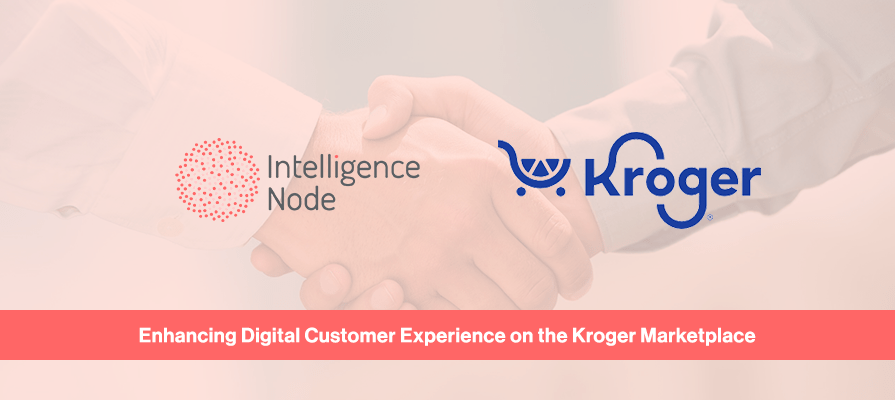Sephora SVP, Amy Lauer, and Soft Surroundings VP, Gail Buffington, sat down with our very own Sanjeev Sularia, Intelligence Node CEO, to share their insights on the post-Covid economy and what retailers can do to grow revenue right now. In our webinar, promoted via Total Retail, this thought-leading team discussed a range of topics from the retail economy, changing customer behavior, to the critical role of technology in increasing revenue in the current retail landscape.
Sephora is a French multinational chain of personal care and beauty stores featuring nearly 300 brands, along with its own private label.
Soft Surroundings offers stylish, luxurious & comfortable women’s clothes for every size and beautiful shoes and jewelry to match.
Intelligence Node is a real-time retail price intelligence platform that empowers businesses to drive product level profitability and grow margins using data-driven competitive insights.
Leading as a premier independent data powerhouse, it has created the world’s largest pricing dataset with unmatched accuracy – feeding the growth of more than $600 billion in retail revenue globally.
Intelligence Node drove the conversation with a series of questions around critical factors to grow retail revenue in a disruptive economy. A brief summary of the key points discussed in the webinar is below.
Are we on the cusp of a new global retail order?
Both Sephora and Soft Surroundings leaders were of the opinion that the retail landscape will significantly transform as we recover from COVID-19, with customers transitioning into eCommerce and their expectations evolving. Soft Surroundings’ Gail Buffington rightly pointed that, “We are definitely going to be in an era of different customer expectations for retail, globally. Customers that transition to eCommerce is going to bring their in-store expectations to digital and once stores open up we are definitely going to see customers bringing their digital expectations to in-store”.
“Even before the crisis, there was a dramatic shift to eCommerce buying in the holiday season, and this trend will only increase due to the disruption brought about by the pandemic” stated Sephora’s Amy Lauer.
Customers will expect a unified and consistent experience across every channel and with the opportunity to onboard new customers with little to no cost of acquisitions, retailers need to be prepared to provide an enriched, personalized experience by adopting digital-first, omnichannel approaches across consumer lifecycle to ensure margin growth and increase in revenue.
Best practices on tracking customer buying signals?
Today’s customer is highly informed and demanding with a lot of information at his/her disposal. In disruptive situations like the COVID-19 pandemic, it becomes all the more important to study and analyze consumer behavior and alter the next steps accordingly. Thanks to technology, brands have access to vast amounts of consumer data, which if analyzed can give insights into their sentiments and behavior patterns.
As Sephora’s Amy Lauer put it, “Retailers need to analyze consumer buying behavior, where they are purchasing, what they are purchasing and at what price, to understand the buying signals, especially of customers who are a.) new to your brand and b.) new to your eCommerce channel, to be able to deliver experiences that ensure brand loyalty even after the crisis ends and stores start opening up.”
“Both technology and change management will play an equally important role in helping brands be on top of the vast consumer data they have access to,” stated Soft Surroundings’ Gail Buffington.
From ERP planning to Plug and Play tools. Are there changes anticipated in the tech stack the retailers would opt for?
To Intelligence Node’s Sanjeev Sularia’s question on whether on-premise installations needing consultations and heavy integrations and taking anywhere between a couple of quarters to a couple of years to deploy, would still be preferable in the light of the current crisis and with flexible, cloud-based plug-and-play solutions ruling the market, both leaders from Sephora and Soft Surroundings had some interesting insights.
“Even before the crisis, we were starting to see a lot of cracks in the world of on-premise. This is making way for cloud-based SaaS solutions to come in the forefront and creating a lot of opportunity for small and medium players offering SaaS solutions to carve out a market share for themselves,” stated Soft Surroundings’ Gail Buffington.
Sephora’s Amy Lauer shared a similar outlook, ”Building these solutions yourself can be very slow and to move quickly you need to tap into smaller vendors who are more specialized.”
WithCOVID-19 altering the game field, even more, retailers are working towards increasing their revenue by moving towards the flexible, customizable, and disruptive plug and play SaaS solutions, opening doors for specialized players to strengthen their foothold in the retail market.
How hard is it to track the competitive landscape given the lack of standardization of product attributes?
“We face challenges on two fronts, the attributes that customers understand or are not exposed and to track competition on a product level with a host of attributes for every product and multiple ways of defining it and understanding what attributes customers are actually looking at.” shared Gail Buffington, Soft Surroundings.
With multiple factors weighing in on customer decisions or buying intent, both the panel members agreed that it is an extremely complex environment, made even more difficult with counterfeits and price violations harming both market share and brand image of certain brands and retailers. On this front, Sephora’s Amy Lauer said’ It is very tedious work keeping track of all resellers and violators, and having technology in place to control and keep a check on the offenders and enable quick action against them, can be an effective way to tackle this problem.”
Will recommerce and sustainability become mainstream retailing models?
“Today, millennials and customers, in general, expect brands to be more purposeful and sustainable in their operations. I think these business models are here to stay. Larger issues of planet and stewardship are important for gen Z and gen Y and older generations as well. We see supply chains make packaging sustainable, try to make products sustainable and business models changing in their entirety to become more sustainable.” Quoted Sephora’s Amy Lauer on these new models.
“At Soft Surroundings, we are working towards ensuring end-to-end sustainability in our products and keeping our promises to customers going forward. We try to be completely transparent about sustainability and are leaning more on sustainable business models for our customers.” Added Gail. There is a growing awareness of social issues and challenges especially amongst the younger shoppers and they expect their brands to represent a purpose towards social causes. Retailers and brands need to move in this direction to be able to increase revenue, stay competitive, and maintain a loyal customer base.
As the panelists approached the end of the webinar, they concluded by answering questions from the attendees about the current COVID-19 crisis, re-onboarding, and training of employees and steps to ensure safety once stores open up.






